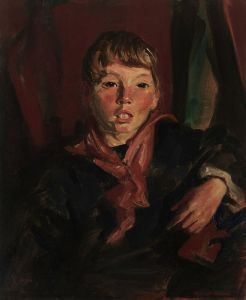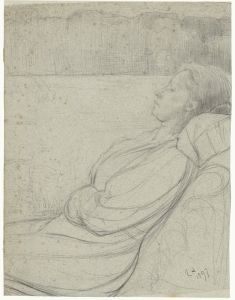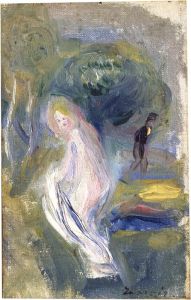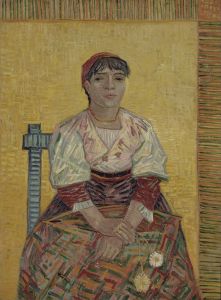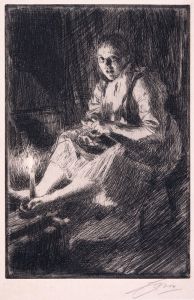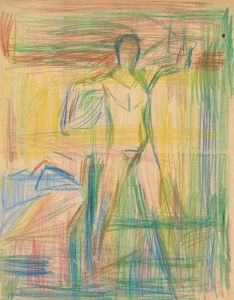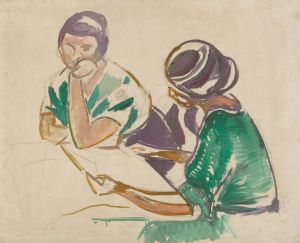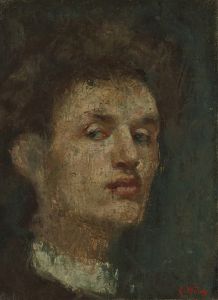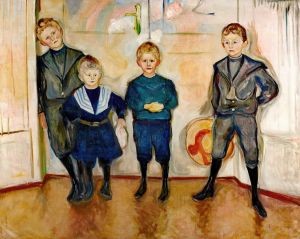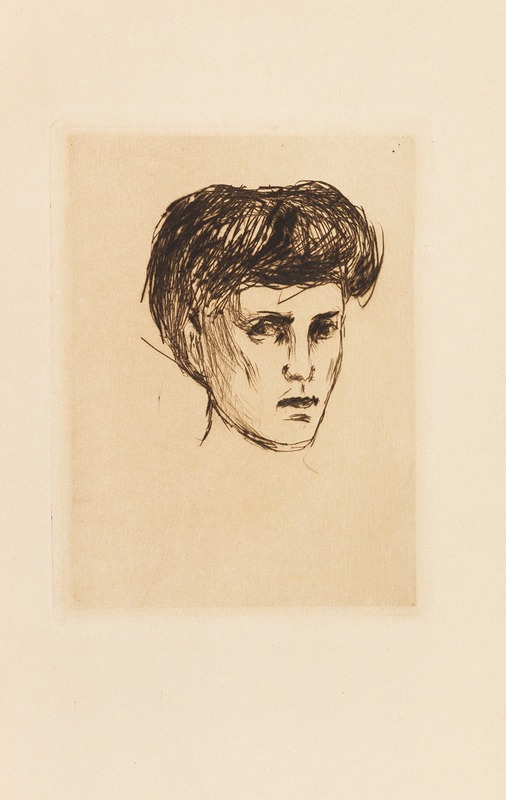
Frauenkopf
A hand-painted replica of Edvard Munch’s masterpiece Frauenkopf, meticulously crafted by professional artists to capture the true essence of the original. Each piece is created with museum-quality canvas and rare mineral pigments, carefully painted by experienced artists with delicate brushstrokes and rich, layered colors to perfectly recreate the texture of the original artwork. Unlike machine-printed reproductions, this hand-painted version brings the painting to life, infused with the artist’s emotions and skill in every stroke. Whether for personal collection or home decoration, it instantly elevates the artistic atmosphere of any space.
"Frauenkopf" (translated as "Woman's Head") is a painting by the renowned Norwegian artist Edvard Munch. Munch, born on December 12, 1863, and died on January 23, 1944, is best known for his iconic work "The Scream," but his extensive oeuvre includes numerous other significant pieces that explore themes of existential angst, love, and death.
"Frauenkopf" is one of Munch's many portraits that delve into the complexities of human emotion and psychology. The painting is characterized by Munch's distinctive style, which often features bold colors, dramatic compositions, and expressive brushwork. These elements combine to convey intense emotional states and psychological depth, hallmarks of Munch's approach to art.
Munch's work was heavily influenced by his personal experiences and the Symbolist movement, which sought to express the emotional and symbolic aspects of human experience rather than depicting the world in a realistic manner. His early life was marked by tragedy, including the death of his mother when he was just five years old and the subsequent death of his sister from tuberculosis. These events had a profound impact on his psyche and artistic vision, leading him to explore themes of illness, death, and anxiety in his work.
"Frauenkopf" fits within this broader context of Munch's exploration of the human condition. The painting likely reflects his interest in the inner lives of his subjects, capturing not just their physical appearance but also their emotional and psychological states. Munch's portraits often reveal a deep empathy for his subjects, portraying them with a sense of vulnerability and introspection.
Throughout his career, Munch was associated with various artistic movements, including Symbolism and Expressionism. His work had a significant influence on the development of modern art, particularly in the way it addressed the inner turmoil and existential concerns of the human experience. Munch's innovative use of color and form helped pave the way for later artists who sought to break away from traditional representational art and explore more abstract and expressive modes of expression.
"Frauenkopf" is a testament to Munch's ability to convey complex emotions through his art. The painting's composition, use of color, and brushwork all contribute to its powerful impact, drawing viewers into the emotional world of the subject. While specific details about the creation and history of "Frauenkopf" may not be as well-documented as some of Munch's other works, it remains an important piece within his body of work, reflecting his ongoing exploration of the human psyche.
In summary, "Frauenkopf" by Edvard Munch is a compelling example of the artist's ability to capture the emotional and psychological depth of his subjects. Through his distinctive style and thematic focus, Munch created a body of work that continues to resonate with audiences and influence artists to this day.







